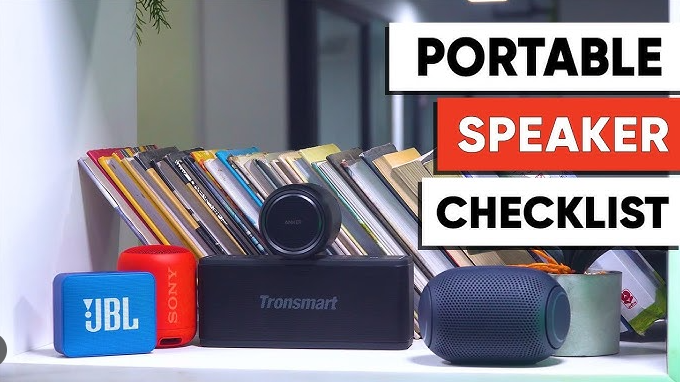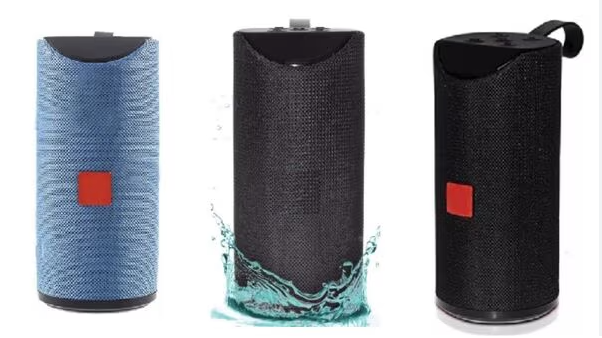When choosing between a Bluetooth speaker and a soundbar, understanding their differences is key to finding the right audio solution for your needs. Both devices enhance sound quality, but they cater to different use cases, from portable music playback to immersive home theater experiences. In this comprehensive Bluetooth speaker vs soundbar comparison, we’ll evaluate their performance, features, and suitability, while providing Bluetooth speaker setup, maintenance, cleaning, and safety tips, along with Bluetooth speaker troubleshooting advice. Whether you’re upgrading your TV audio or seeking portable sound, this best Bluetooth speaker guide will help you decide. For more audio insights, visit our Bluetooth speaker guide.
Bluetooth Speaker vs Soundbar: Key Differences
In the Bluetooth speaker vs soundbar debate, each device serves distinct purposes. Bluetooth speakers are compact, portable devices designed for wireless audio playback from smartphones, tablets, or laptops, ideal for music, podcasts, or casual listening on the go. Soundbars, on the other hand, are long, rectangular speakers tailored for TV audio, offering enhanced sound for movies, shows, and gaming with minimal setup. Both support Bluetooth connectivity, but their design, audio output, and use cases differ significantly. Let’s break down the comparison across key factors.
1. Sound Quality
Bluetooth Speaker: Portable Bluetooth speakers like the JBL Flip 7 (35W) or Anker Soundcore Boom 2 (80W) deliver robust sound for their size, with models like the Sony ULT Field 1 offering punchy bass via Extra Bass technology. They’re optimized for music, providing 360-degree or stereo sound in compact models like the Ultimate Ears WONDERBOOM 4. However, they may lack the power or soundstage for large rooms or cinematic audio, and some distort at high volumes.
Soundbar: Soundbars, such as the Sony HT-S100F (120W) or Sonos Arc Ultra (100W), are designed for home theater, delivering clearer dialogue, richer bass, and a wider soundstage for movies and TV. Many, like the Bose Smart Soundbar, support Dolby Atmos for immersive 3D audio, with multiple drivers (e.g., Sonos Arc Ultra’s 14 drivers) creating surround-like effects. They outperform TV speakers and provide better audio separation than most Bluetooth speakers, but they’re less suited for music-only playback.
Verdict: Soundbars excel for TV audio and cinematic experiences, while Bluetooth speakers are better for music and portability. Choose a soundbar for home theater; opt for a Bluetooth speaker for versatile music playback.
2. Portability
Bluetooth Speaker: Portable Bluetooth speakers are designed for mobility, with compact models like the Anker Soundcore Mini (2.8 x 3.3 inches, 0.5 pounds) or JBL Clip 5 (3.4 x 3.4 inches, 0.62 pounds) easily fitting in bags. Larger models like the Sony ULT Field 7 (20.1 x 8.8 inches, 13.9 pounds) are less portable but include handles or wheels. Built-in batteries (12–30 hours) make them ideal for outdoor use, such as camping or beach trips.
Soundbar: Soundbars are stationary, designed to sit under or above a TV. Models like the Sony HT-S100F (35.4 x 2.5 inches, 5.3 pounds) or Sonos Beam (Gen 2) (25.6 x 2.7 inches, 6.2 pounds) are sleek but require a power outlet and are not meant for travel. Some, like the Bose Smart Soundbar, can be wall-mounted but lack portability.
Verdict: Bluetooth speakers win for portability, perfect for on-the-go use. Soundbars are best for fixed home setups.
3. Connectivity
Bluetooth Speaker: Bluetooth speakers primarily use Bluetooth 5.0/5.3 for wireless streaming from phones or laptops, with ranges up to 100–150 feet (e.g., JBL Flip 7). Some, like the UE HYPERBOOM, offer aux inputs or USB playback, but Bluetooth is the focus. Advanced models support stereo pairing or party modes (e.g., JBL PartyBoost, UE PartyUp) to connect multiple speakers. They may have audio-video sync issues when paired with TVs due to Bluetooth lag.
Soundbar: Soundbars prioritize TV connectivity via HDMI ARC/eARC or optical inputs, ensuring no audio-video lag for movies or gaming. Most, like the Sonos Arc Ultra, also support Bluetooth and Wi-Fi (e.g., AirPlay, Chromecast) for music streaming. Features like Bose SimpleSync or Sony Party Connect allow pairing with other speakers, and some include voice assistants (Alexa, Google Assistant).
Verdict: Soundbars offer superior TV connectivity with HDMI ARC and Wi-Fi, while Bluetooth speakers are better for simple, device-agnostic wireless streaming.
4. Setup and Ease of Use
Bluetooth Speaker: Bluetooth speaker setup is simple—charge, power on, pair via Bluetooth, and play. Models like the Anker Soundcore Boom 2 require minimal setup, with apps (e.g., Soundcore app) for EQ tweaks or pairing. They’re plug-and-play for music but may need manual power-on for TV use, and Bluetooth lag can cause sync issues.
Soundbar: Soundbars are designed for easy TV integration, requiring only an HDMI or optical cable and a power connection. Models like the Sony HT-S100F support HDMI ARC, allowing control with your TV remote. Setup is straightforward, but placement is fixed, and some require calibration for optimal sound (e.g., Sonos Arc Ultra).
Verdict: Soundbars are easier for TV setups, while Bluetooth speakers are simpler for general wireless use.
5. Price and Value
Bluetooth Speaker: Portable Bluetooth speakers range from budget options like the Anker Soundcore 3 ($51) to premium models like the JBL Boombox 3 ($500). They offer great value for portable, versatile audio, with features like IP67 waterproofing and long battery life (up to 24 hours).
Soundbar: Soundbars start at $100 (e.g., Sony HT-S100F) and go up to $1,000+ for premium models like the Sonos Arc Ultra. Budget soundbars outperform TV speakers, while high-end models add Dolby Atmos or subwoofers. They’re less versatile than speakers but offer better TV audio for the price.
Verdict: Bluetooth speakers are more affordable and versatile for general use; soundbars provide better value for dedicated TV audio.
Top Sony vs Anker Bluetooth Speaker Models
Here are standout Bluetooth speakers and soundbars for 2025 to illustrate the Bluetooth speaker vs soundbar comparison:
- JBL Flip 7 ($150): Compact (7.1 x 2.7 inches, 1.2 pounds), 35W, IP68 waterproof, 16-hour battery life, Auracast pairing. Best for portable music.
- Anker Soundcore Boom 2 ($129.99): Mid-size (12.2 x 7.2 inches, 3.75 pounds), 80W, IPX7 waterproof, 24-hour battery life, RGB lights. Ideal for parties.
- Sony HT-S100F ($118): Compact soundbar (35.4 x 2.5 inches, 5.3 pounds), 120W, Bluetooth 4.2, HDMI ARC, S-Force Front Surround. Great for budget TV audio.
- Sonos Arc Ultra ($1,000): Premium soundbar (46.4 x 3.8 inches, 13.8 pounds), 100W, 14 drivers, Dolby Atmos, Wi-Fi/Bluetooth. Best for immersive home theater.

Bluetooth Speaker Setup for Both Devices
Proper Bluetooth speaker setup ensures optimal performance:
- Bluetooth Speaker: Charge fully (2–4 hours), press the Bluetooth button to enter pairing mode (flashing LED), and connect via your device’s Bluetooth settings. Place centrally for 360-degree models (e.g., UE WONDERBOOM 4) or angle toward listeners for directional models (e.g., Anker Soundcore Motion 300). Use apps like JBL Portable for EQ tweaks.
- Soundbar: Connect to your TV via HDMI ARC or optical cable, plug into a power outlet, and pair with your phone via Bluetooth for music. Place under or above the TV, ensuring no obstructions. Use apps like Sonos S2 for calibration or Sony Music Center for settings.
-
Bluetooth Speaker Troubleshooting
Both devices may face issues. Here are Bluetooth speaker troubleshooting tips:
- Connection Issues: Ensure pairing mode is active (flashing LED) and the device is within range (33–150 feet). Forget and re-pair in Bluetooth settings. Reset by holding power/Bluetooth buttons for 5–20 seconds (check manual).
- No Sound: Confirm the device is paired, unmuted, and volume is up. For soundbars, ensure HDMI/optical connections are secure. Check for grille debris and clean with a soft brush.
- Audio Lag (Bluetooth Speaker): Bluetooth lag can occur with TVs (e.g., JBL Flip 7). Use aux or optical inputs if available to eliminate delay.
- Distortion: Lower volume to 70–80% to avoid driver strain. Adjust EQ via apps (e.g., Soundcore app) for balanced sound.
-
Bluetooth Speaker Cleaning and Maintenance Tips
Proper Bluetooth speaker cleaning and maintenance ensure longevity:
- Clean the Exterior: Wipe with a soft, dry cloth. Use a damp cloth with mild soap for dirt, avoiding harsh chemicals on rubber or fabric finishes (e.g., Sony ULT Field 1).
- Clear the Grille: Remove debris with a soft brush. Rinse IPX7/IP67-rated speakers (e.g., Anker Soundcore Boom 2) under fresh water after beach use and dry thoroughly.
- Protect from Elements: Store in a case to shield from dust or UV exposure, especially for non-dustproof soundbars or speakers like the Soundcore Boom 2 Plus.
- Battery Care (Bluetooth Speaker): Charge every 2–3 months if unused to prevent degradation. Avoid overcharging by unplugging once full.
- Check Ports: Keep USB-C, Micro-USB, or HDMI ports clean using compressed air or a small brush.
- For more maintenance tips, visit our guide at bluetoothspeakerusa.com.
Bluetooth Speaker Safety Tips
Follow these Bluetooth speaker safety tips to protect both devices:
- Check IP Rating: Use IP67-rated speakers like the JBL Charge 6 for outdoor settings; avoid exposing non-IP-rated soundbars like the Sony HT-S100F to water or dust.
- Avoid Overheating: Keep away from direct sunlight or heat sources to prevent battery or circuit damage, especially for soundbars without ventilation.
- Use Proper Charging: Use the manufacturer’s cable or adapter to avoid electrical issues.

Bluetooth Speaker vs Soundbar: Which Should You Choose?
The Bluetooth speaker vs soundbar decision depends on your needs:
- Choose a Bluetooth Speaker If: You value portability, versatility, and music playback for indoor or outdoor use. Models like the Anker Soundcore Boom 2 ($129.99) or JBL Flip 7 ($150) are ideal for travel, parties, or casual listening. They’re budget-friendly and battery-powered but may lack TV audio precision.
- Choose a Soundbar If: You want enhanced TV audio for movies, shows, or gaming. Soundbars like the Sony HT-S100F ($118) or Sonos Arc Ultra ($1,000) offer immersive sound, HDMI ARC connectivity, and features like Dolby Atmos, but they’re stationary and less versatile for music.
-
Conclusion: Bluetooth Speaker vs Soundbar
In the Bluetooth speaker vs soundbar debate, your choice hinges on your primary use case. Portable Bluetooth speakers excel for music, portability, and outdoor versatility, with models like the JBL Flip 7 offering robust sound and durability. Soundbars, like the Sonos Arc Ultra, are superior for home theater, delivering cinematic audio and easy TV integration. By following our Bluetooth speaker setup, cleaning, maintenance, and safety tips, you can ensure either device performs at its best. Need help choosing the best Bluetooth speaker or soundbar? Explore our best Bluetooth speaker guide at bluetoothspeakerusa.com for reviews and expert advice.